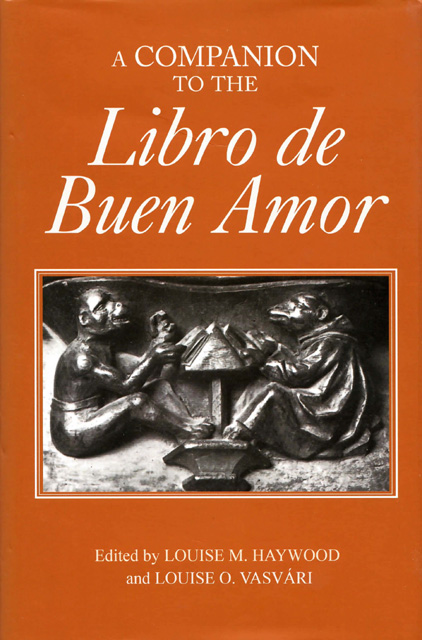Book contents
Chaotics, Complexity, and the Libro de buen amor
Published online by Cambridge University Press: 10 May 2023
Summary
The beautiful swirling shape known as the Lorenz attractor is a visual image of a strange attractor, a term coined by twentieth-century chaos theorists to illustrate the stability and hidden structure in supposedly patternless systems. In this essay, I should like to suggest ways in which a modern interdisciplinary approach can enrich critical reading, by exploring the metaphorical and literal relevance of both the term ‘strange attractor’ and the concept of chaos to the study of a fourteenth-century Castilian poem.
Faced with the complexity and apparent disorder of Juan Ruiz’s Libro de buen amor, critics have tried hard to smooth out the structures of the Libro in a more rigidly linear fashion, notably in terms of its overall design, attempting to impose unity in a way which exemplifies what Roland Barthes calls a ‘centrist philosophy to control texts, language and power structures within society’ (Hayles 1990: 187). The Libro has sometimes been characterized as anthological in structure. In the nineteenth-century, José Amador de los Ríos emphasized this aspect in his long discussion of the diverse aspects of fourteenth-century Castilian life encompassed by the text (1861–65: IV, 155–204), underlining the amorphous nature of ‘el variado conjunto que constituye tan peregrina obra’ (160). Later critics, such as Gonzalo Sobejano (1973) echoed this opinion, but tried to impose the idea of a formal structure by stating that at close range the reader is aware of the juxtaposition of apparently disparate sections of text, yet only when the text is viewed as a whole can any coherence be seen. The proposition that perception of the text varies according to scale bears directly upon chaos theory.
In spite of the predominantly European sources for the Libro, Américo Castro believed the work to be strongly influenced by Hispano-Arabic literature precisely because of its complex and fluid structure:
Ni en el Pamphilus ni en la Bataille de Caresme et de Charnage, ni en todo lo demás, se encuentra la forma flúida y deslizante característica del estilo del Arcipreste. Ahora bien, este modo de entrar el poeta en su realidad literaria, y de instalarse en ella, es propio de la manera árabe de estar en la vida. (1954: 406)
The form of the Libro is, in Castro’s eyes, typified by movement and change: ‘una continua e interna transición estructura el Libro’ (1954: 397).
- Type
- Chapter
- Information
- A Companion to the Libro de Buen Amor , pp. 151 - 164Publisher: Boydell & BrewerPrint publication year: 2004



